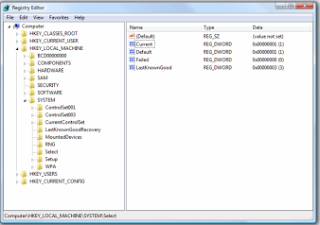Enable Registry Editor disabled by Administrator or Virus
Registry Editor is a
useful utility in Windows which allows users to easily change advanced
Windows settings by altering registry keys present in a hierarchical
arrangement called the Windows Registry. Despite being such a powerful
tool, Registry Editor is not totally error-proof.
A simple virus infection is all it takes to render it useless. Or, there
are times when your administrator has actually disabled Registry
Editing. When you try to open the Registry Editor in one such computer,
you are likely to receive the“
Registry editing has been disabled by your administrator” error. Due to this error, it is impossible to remove this restriction using Registry Editor itself.
 |
| Windows Registry Editor |
This article suggests some workarounds for re-enabling Registry editing in a computer running Windows
XP, Windows Vista, Windows Server 2003/ 2008, Windows
7 or Windows
8.
Enable Registry Editor Using Group Policy Editor
- Click on Start. Go to Run. Users running Windows 8, Windows 7 or Vista, go to Search.
- Type gpedit.msc and press Enter.
- Navigate to User Configuration/ Administrative Templates / System.
- In the work area, double click on "Prevent Access to registry editing tools".
- In the popup window, encircle Disabled and click on OK.
- Normally, Registry Editor will be immediately accessible. If it is not, restart your PC.
Group Policy Editor is not available on home editions of Windows.
 |
| Getting access to Registry Editing |
Related:
Enable Task Manager disabled by Administrator or Virus
Enabling Registry Editor using UnHookExec.inf from Symantec
Symantec
has created a small .inf file which can be installed to remove
restrictions on modifying registry keys at the click of a mouse. Most
viruses, spywares, Trojans or worms normally affect the
shell\open\command keys which allows them to run each time when a file
of specific type is executed. Normally, they associate their execution
with .exe files. UnHookExec.inf not only enables registry editing but
also removes such associations.
Just save
UnHookExec.inf and install it by right clicking and selecting install. Installing the file will not show any popup or notice box.
Enable Regedit by simply running a CMD Command
- Open Notepad.
- Copy the code given below and paste it.
reg add "HKCU\Software\Microsoft\Windows\CurrentVersion\Policies\System" /t Reg_dword /v DisableRegistryTools /f /d 0
- Save
the file as EnableRegistry.bat. Run this file as Administrator if you
use Windows 8, Windows 7 or Windows Vista. In Windows XP, simply open
the file. CMD will flash for a second and then disappear. This indicates
successful execution.
- Log Off and Log Back On.
Visual Basic Script to Enable/ Disable Registry Editor
Doug Knox has created a VBS Script which allows users to easily enable and disable Registry Editor. Just download
regedit tools.vbs and
double click on it. This script reverses the current state of Registry
Editor. If registry editing is set to enabled, this script will disable
it and if it is disabled, it will enable it.
If the above link does not work, copy the code given below in Notepad and save the file as *.vbs or
Registry Editor.vbs.
Option Explicit
Dim WSHShell, n, MyBox, p, t, mustboot, errnum, vers
Dim enab, disab, jobfunc, itemtype
Set WSHShell = WScript.CreateObject("WScript.Shell")
p = "HKCU\Software\Microsoft\Windows\CurrentVersion\Policies\System\"
p = p & "DisableRegistryTools"
itemtype = "REG_DWORD"
mustboot = "Log off and back on, or restart your pc to" & vbCR & "effect the changes"
enab = "ENABLED"
disab = "DISABLED"
jobfunc = "Registry Editing Tools are now "
t = "Confirmation"
Err.Clear
On Error Resume Next
n = WSHShell.RegRead (p)
On Error Goto 0
errnum = Err.Number
if errnum <> 0 then
WSHShell.RegWrite p, 0, itemtype
End If
If n = 0 Then
n = 1
WSHShell.RegWrite p, n, itemtype
Mybox = MsgBox(jobfunc & disab & vbCR & mustboot, 4096, t)
ElseIf n = 1 then
n = 0
WSHShell.RegWrite p, n, itemtype
Mybox = MsgBox(jobfunc & enab & vbCR & mustboot, 4096, t)
End If
After running the VBS file, if Registry Editing is not enabled, try restarting your PC.
 Setting TCP/IP di windows melalui command prompt
Setting TCP/IP di windows melalui command prompt




































